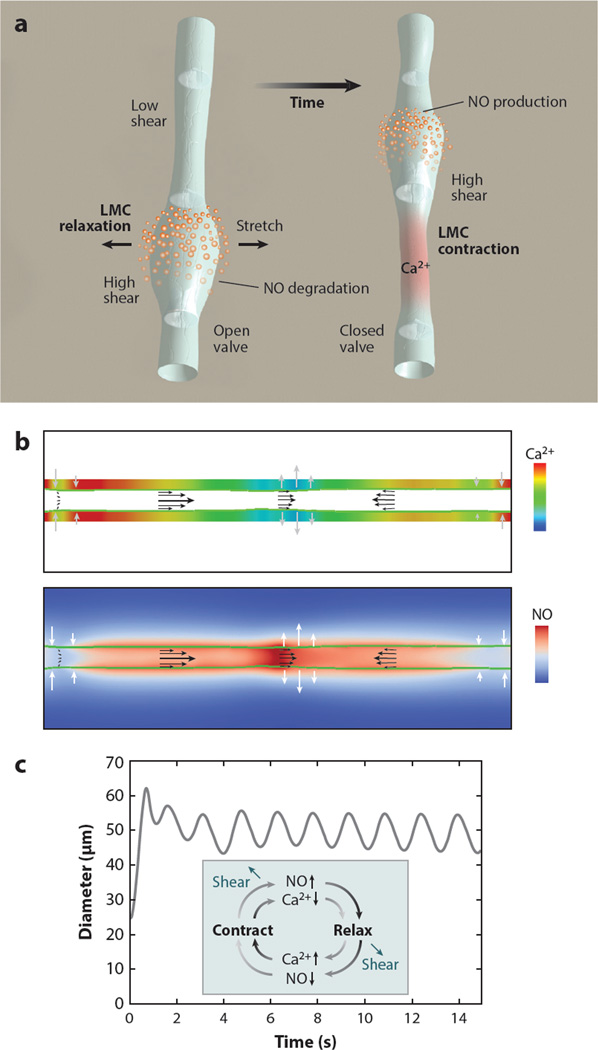Figure 3.
Dynamics of lymphatic pumping. (a) Conceptual scheme, showing two different snapshots of the lymphatic pumping cycle. Flow direction is from bottom to top. NO relaxes the vessel wall, increasing vessel diameter and pulling fluid from upstream. As the lymphangion fills, the upstream valve is open, and the downstream valve is closed. When the lymphangion is filled, flow and shear stress decrease, and NO is degraded; a subsequent contraction can be initiated through Ca2+ influx via stretch-, voltage-, or ion-activated channels. The contraction closes the upstream valve and opens the downstream valve, increases wall shear stress and induces NO production locally, thus starting the cycle again (NO, orange; cytosolic Ca2+, red). (b) Snapshot of the simulated system at steady state. The vessel boundary is indicated by the green line. Ca2+ and NO concentrations are shown in the top and bottom color maps, respectively. The flow field is represented by the black arrows, and the current wall velocity is indicated by the gray/white arrows. Numerical check valves at the entrance/exit and midpoint enforce flow toward the right. (c) Pumping dynamics predicted by the model. At t = 0, flow is initiated by a mechanical perturbation. The system quickly stabilizes, and subsequent pumping is self-sustained. (Inset) The cyclical nature and dependency of NO and Ca2+ production during a lymphatic contraction. Abbreviations: NO, nitric oxide; LMC, lymphatic muscle cell. Modified from Reference 91.

